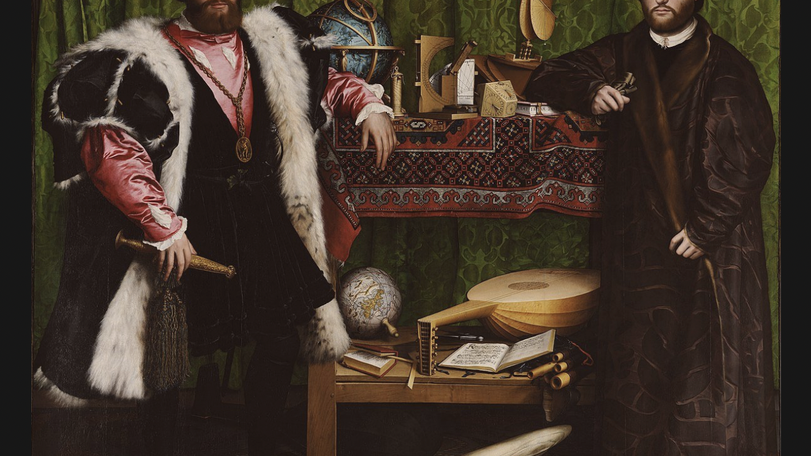
Antônia Felipe
Partner Content
There's Comfort In Melancholy: Why We Shouldn't Be Afraid Of Sad Ads
"Good vibes only" is bad marketing. It's time brands got comfortable with uncomfortable emotions, says BBH London senior strategist
03 March 2022
I once worked with a brand that wouldn’t allow the word “no” in a headline. Even though the “no” was used to highlight the absence of something undesirable. “How about 'never'?” I asked. “Absolutely not”. “How about 'nothing'? Like 'nothing holds us back'?” I ventured. “Under no circumstances”.
There’s a commonly held belief that negativity in advertising should be avoided at all costs. Does this ad contain language that isn’t wholly positive? Careful now. Does the narrative arc contain a moment of tension, confusion or conflict? You’re on thin ice. Does your campaign make people feel uncomfortable, melancholy or - at worst - sad? Go straight to jail, do not pass go, do not collect £200.
This school of marketing thought - which I’m calling “exclusive positivity” - is the relentless pursuit of work that elicits only happy, positive emotion in creative testing; presumed to directly correlate with “brand love”. The absence of “frowny faces” is viewed as a success. The only issue being that this approach overlooks two truths of human behaviour: 1.Sometimes sadness makes us feel better. 2.Sometimes sadness is necessary to feel happiness/spark action/inspire.
1: Sometimes sadness makes us feel better
If we take the first point - “sometimes sadness makes us feel better” - I turn to the patron saint of deep feelings, Joni Mitchell, who sings “there’s comfort in melancholy”. Wallowing can make us feel better. Countless memes exemplify this experience.
Take the famously “feel good” Christmas movie Love Actually (that incidentally introduced a new generation to Mitchell’s music). It features a funeral, unrequited love and a failed marriage. Lots of “frowny face” stuff, yet we come back to it year after year.
“Social sadness”, as it’s referred to in academic circles, is an important communal experience. It’s a healing process: sharing, acknowledging and accepting that things are a bit rubbish connects us, it builds trust and helps us to move forward.
After the collective disappointment, heartbreak and loss of the past two years, it’s perhaps no wonder that Adele's new album 30 (inspired by “divorce, babe, divorce!”) had the biggest opening week of any record released in 2021. It’s hardly happy, but it does provide some comfort at a time when many feel that, as the writer Susan Orlean recently tweeted, “we’ve run out of resilience”.
Back in the world of advertising, Savanta recently published its list of the UK’s most loved brands. Those in the top spots had earned their places by speaking to "emotional reassurance, nostalgia, togetherness". One of the three most loved brands was Cadbury, whose recent campaigns focused on uncomfortable social issues like loneliness to demonstrate there “is a glass and a half full in everyone”.
Macmillan Cancer Support, ranking in the top 20 most loved UK brands, is also no stranger to negative emotion. Their 2021 advert "Whatever it Takes" is a heart-wrenching compilation of moments during people’s cancer journeys. It breaks the cardinal rule of “exclusive positivity” by ending its narrative without positive resolution. The emotional rawness of the final scene - a woman, inconsolably weeping in a nurse’s arms - makes this spot all the more powerful.
Because positivity isn’t just saying positive things, it’s generating positive emotions. Sadness helps us do this.
If you’re not convinced by these recent examples, consider the advert that is consistently voted Britain’s favourite of all time: the Hovis ad. If you look at it trying to find some positivity, you might be disappointed. It is actually pretty bleak: a boy pushing a heavy bike up a hill while some mournful music plays and then he’s told to keep eating Hovis bread so he can continue to do that back-breaking work every day. It’s not a barrel of laughs. But it is moving in a way that can’t be easily defined as “positive”. It’s nostalgic. It speaks to our deeply held values of hard work, community, togetherness.
Perhaps the desire to exclude negativity and cut straight to the “good part” betrays a lack of faith in our own craft. Countless digital marketing reports show that most people only engage with ads for a few seconds before skipping or scrolling. Therefore, many attempt to cram all the warm and fuzzies into the first few seconds because “then at least people feel good about us!”. But, as Sir John Hegarty says, “people are just interested in interesting things. It’s our job to create interesting things; it always has been, but it’s now even more focused because it’s so much easier to switch off”.
Negativity, tension and conflict can be our secret sauce. Nike’s award-winning "Dream Crazier" ad is 1'30" long, unpacks the thorny subject of women being stigmatised for showing emotion in sports, and yet it has over half a million views and counting. There’s a problem to resolve; one that makes watching and rewatching worthwhile.
None of this is new. Hans Holbein the Younger understood this long before Nike. Data collected by The National Gallery shows The Ambassadors by Hans Holbein the Younger was one of the most viewed artworks in its virtually-available collection during lockdown. It draws the audience in without providing answers, happiness or resolution. Ironically, the optical illusion doesn't even work on a computer screen (trust me, I tried).
2: Sometimes sadness is necessary to feel happiness / spark action / inspire
Now, if we look for evidence of the second truth of human behaviour - that sometimes sadness is necessary to feel happiness/spark action/inspire - we are also spoilt for choice.
Sainsbury’s Christmas advert from 2014 which commemorates the World War One soldiers who crossed No Man’s Land on Christmas day 1914 comes to mind. It shows shivering teenagers in the trenches surrounded by weapons, during one of the bloodiest conflicts in modern history. This desolate setting makes the unlikely tale of friendship and generosity even more potent.
Or take this 2013 iPhone Christmas commercial, where a seemingly antisocial son who spends all his time on his phone, turns out to be documenting his family’s festivities for posterity in a touching film.
And I would be remiss not to mention Tesco’s "Nothing’s Stopping Us" Christmas 2021 campaign, made in partnership with BBH. The story celebrates the stresses and frustrations we’ve faced this year, and everyone comes out smiling.
But “negativity” isn’t just for Christmas. We’re all familiar with Lloyds' "By Your Side" campaign, where arguably negative emotions of endurance and resilience underscore a positive story of loyalty and trust. Or the Dove "Real Beauty" sketches. For the beauty category, where the order of the day is still aggressively positive #girlboss “empowertising”, Dove consistently stands out for its thoughtful approach.
All these examples prove that the most powerful emotional journeys have light and shade. The stories that touch us most deeply usually have sorrow and joy. As somebody called Joy, who is also trying to justify the student debt from her English Literature degree, you could say I have an accelerated interest in quotes on this subject. William Blake says it best in his Songs of Innocence and Experience:
Joy and woe are woven fine,
A clothing for the soul divine.
Under every grief and pine
Runs a joy with silken twine.
Or if Blake is a bit University Challenge for your tastes, take a look at the top “feel good” pop songs of all time. Most of them start with lines that give little succour, yet end on a high.
The shade helps us see the light more brightly. The emotional punch hits harder if we’ve been on a journey. We see this in our lives every day. It’s the high you feel after a run. It’s the hot, empty, freeing release after a good cry. It’s the deep embrace of a loved one after you’ve been apart for too long.
I will end by saying that this is by no means a manifesto for needlessly morbid ads. This is not a call out for more sombre piano soundtracks and high-pitched indie covers of 80s bangers. Nor is it a request for more “now more than ever” monologue lockdown ads (please make it stop!). It it also worth noting that in some categories, such as the charity sector, where “sadvertising” is the norm, taking a more positive approach can actually be more disruptive, engaging and surprising. Like Barnado’s decision to portray vulnerable children not as pitiable, but strong.
This is a call for advertisers to get comfortable with uncomfortable feelings. To not be afraid of the words “no”, “nothing” or “never”. To embrace what the classics can teach us; whether that’s Holbein, Hot Chocolate or Hovis. To trust that a “frowny face” isn’t always a bad thing. And that sometimes sadness is necessary to make our joy even sweeter.
Joy Molan is senior strategist at BBH London









